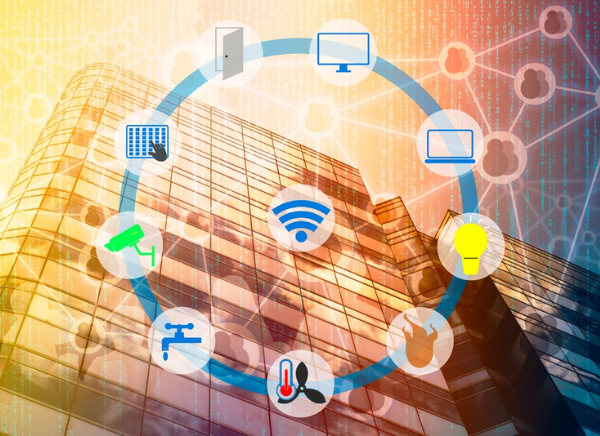
By Brian K. Davis, Global Market Development Director for In-Building Networks at Corning Optical Communications and Piers Benjamin, EMEA In Building Networks (IBN) Marketing Manager, Corning Optical Communications
We are at a point in time when everything from TVs to watches, speakers, lights, and more are being labelled as ‘smart’. Buildings are no exception. According to IDC’s research, Smart Cities spending in the Middle East & Africa region is expected to double during the 2020-25 period, crossing $4.4 billion in 2025 and growing at a compound annual growth rate of 17.5%.
But what exactly makes a smart building… smart? At its core, ‘smart’ refers to technology that can automate functions, collect data and analyze it, all in the name of running a more efficient building. Let us look at smart homes as one example. According to a recent report from MarkNtel Advisors, the market for smart homes alone will see an estimated CAGR of 24% between 2021 and 2026. This is largely attributed to customers’ increased awareness around the various benefits of smart technologies, such as remote monitoring, improved security, and support sustainability efforts. Moreover, the region’s current emphasis on sustainable urban planning will push the demand for smart building technology even further, especially in markets like the UAE and Saudi Arabia with ambitious Net-Zero targets.
The Telecommunications Industry Association and UL recently launched SPIRE, an assessment and rating program that evaluates building intelligence. As a relatively new and ambitious assessment matrix, it is advantageous for stakeholders in the region to fully understand the program, and how it can benefit their operations and the communities in which they do business. The Corning Optical Communications headquarters building in Charlotte, N.C., served as a pilot for SPIRE, and below is a summary of what the program measures:
Connectivity – Reliable connectivity is a must for any building today. It is now considered the Fourth Utility, as crucial as electricity, water, and gas. For a smart building running multiple applications, having the right network in place is essential. Traditional copper networks have their limitations, but fiber optic networks can deliver the bandwidth needed to support the data demands needed for new technology, like upgraded Wi-Fi or 5G cellular coverage.
Health and Wellbeing – Even in a post-COVID world, technology has become ever more integrated into environments such as office spaces and school to hospitals and airports. Sensors and other tools have been implemented to monitor spaces for overcrowding, check temperatures upon building entry, monitor air quality, and more. These emerging digital health tools have been added to smart building networks at a fast pace to help ensure the safety of those inside.
Life and Property Safety – Keeping building occupants safe is a top priority for owners. From fire safety to emergency response, a clear plan is necessary. Smart technology plays an important role in monitoring system performance, detecting problems like a fire, and deploying emergency communications when needed.
Power, Energy and Sustainability – Smart buildings’ monitoring technology also serves other purposes, like sustainability. When you think about things like HVAC, lighting and the many electronics that occupy a building, it’s easy to understand why energy is one of the biggest expenses—and one that building owners want to minimize. Smart buildings monitor and analyze consumption so that areas where there is wasteful energy spending can be identified and reduced, if not eliminated. The data collected can help identify trends so that demand spikes can be managed, or maintenance can be scheduled during low-demand hours. SPIRE recognizes many programs and certifications dedicated to this effort. LEED, Fitwel, and the WELL Building Standard are just a few of the programs.
Cybersecurity – Another area where building intelligence is vital is in detecting cyber threats. As smart countries and cities are built and new technologies are adopted, the possibility of a cyberattack increases drastically. Cyberattacks can be crippling to governments, businesses, and consumers, including their physical building infrastructure. Being able to identify threats and effectively respond is mandatory given today’s threat landscape, and this can be integrated into the infrastructure of smart buildings as part of SPIRE measurements.
With a strong network as the foundation, smart buildings in the MENA region can continue to be equipped for the needs of tomorrow; enabling all organizations to operate efficiently and sustainably without missing a beat.